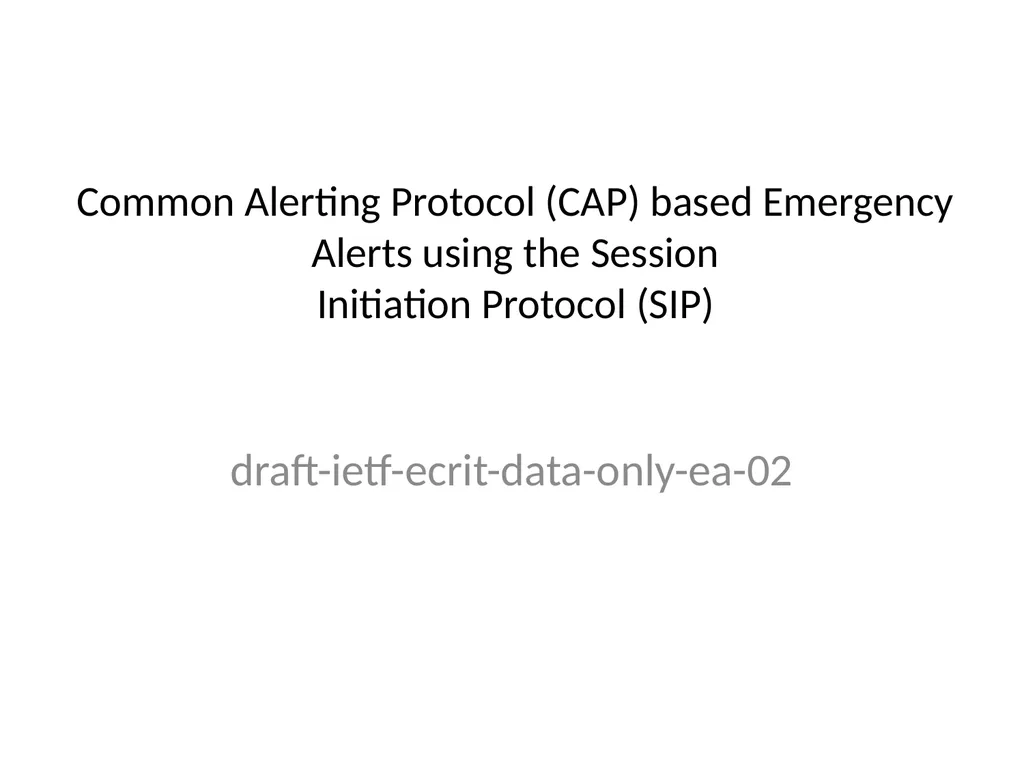
Common Alerting Protocol (CAP) based Emergency
Author: lois-ondreau | Published: 2025-08-08
Description: Common Alerting Protocol (CAP) based Emergency Alerts using the Session Initiation Protocol (SIP) draft-ietf-ecrit-data-only-ea-02 Status Marc stated WGLC on draft-ietf-ecrit-data-only-ea-01.txt Martin Thomson, James Winterbottom, Marc
Download Presentation
Download the PPT/PDF: Download
Transcript:
Loading transcript…